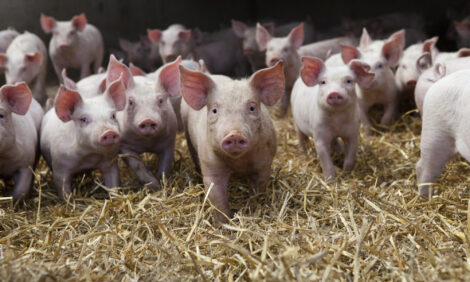



WPX: Asia swine consultant speaks on ASF, rebuilding the breeding herd in China
Todd Thurman, consultant with SwineTex based in Texas, USA, spoke to The Pig Site's Sarah Mikesell at the 2021 World Pork Expo, being held live in Des Moines, Iowa, USA.Thurman says about 70% to 80% of their consulting businesses is in Asia with the majority in China and some in southeast Asia.
“Obviously for the last two years, African swine fever (ASF) has been the dominant story – where we’re at with ASF in China and where are we at in terms of rebuilding the herd in China,” said Thurman. “We were on the record saying at the worst point that we lost 65% of the herd in China, then we've had somewhat confusing reports coming out of China as to where are we at in terms of the recovery and this resurgence of ASF and how that has impacted the recovery that we've been tracking so closely. It’s so important to the global industry because of China being a huge market, and what happens in China has a major impact on pretty much everywhere else in the pork world.”
Rebuilding China’s sow herd
There's been a lot of focus on the numbers in terms of where are China is at in rebuilding the sow herd compared to pre ASF.
“The bigger story is probably what are we restocking with, and that has mostly been with animals that weren't intended for breeding stock, so we're getting fairly predictable, poor results,” Thurman explained. “I say predictable, probably worse than I anticipated. We're seeing reproductive performance, maybe 25% to 30% lower than what we were seeing before. If we start thinking about the numbers, even if we’re at 100% of where we were pre-ASF from a reproductive standpoint, we're still maybe 70% of where we were at before.”
Reproductive performance certainly represents a unique challenge that will be a long-term issue to solve.
“It's going to take time and certainly the international genetic companies are poised to help with that, but that's not something that happens overnight - it'll be a longer process. There’s a certain amount of risk that you overbuild to compensate, and then you have a tough adjustment to get those numbers back down,” he noted.
ASF resurgence in China
Thurman says China is still fairly short of returning to pre-ASF pig population levels, and the resurgence in ASF has complicated the problem.
“They were making very good, very fast progress even with animals that are inferior from a reproductive standpoint. But this ASF resurgence has been a pretty significant setback,” he said.
A challenge with identifying the new strain of ASF is that the symptoms look a lot different than the original strain of the virus, making it easier to confuse with other viruses. There has been fewer issues with mortality and sudden death and more issues with morbidity and poor performance long-term.
“In a lot of cases, it looks a lot like what you would see with a PRRS outbreak,” said Thurman. “It's harder to diagnose and identify. It's really difficult to get a handle on what's going on. Before, how would you know you have ASF? All the pigs died, and that's how most of it got diagnosed. There's not a lot of sophistication in being able to diagnose in China. The challenge is it can fly under the radar for awhile and in some ways be a bigger problem than it was before, but in a much different way.”
China lacks reliable diagnostic labs where producers can get their data back quickly.
The path forward for China
Recently, China’s government has made efforts to improve the ASF situation. They are using significant resources to try and bring the pork industry back, and it will come back, according to Thurman. When it will come back is currently unknown.
Exporters around the world should take advantage of the ASF situation in China while it lasts, but Thurman says be prepared for China’s return. China’s long-term goal is to be self-sufficient going forward.
“There's some indication that they're willing to be a little more reliant on imports going forward, which even a little bit in a market that size makes a big difference,” said Thurman.
“Where as it was maybe 2% before, it might be 4% or 5%, and they might be comfortable with that. It sounds like a small number, but when you're talking about a market that represents half the pigs in the world, it's big numbers. That's significant, but they're going to get back eventually - it's just a matter of time. There's too much incentive for them to get there. They're going to get to 95% or so of their own needs and then rely on imports. The current situation is not going to last forever.”

















